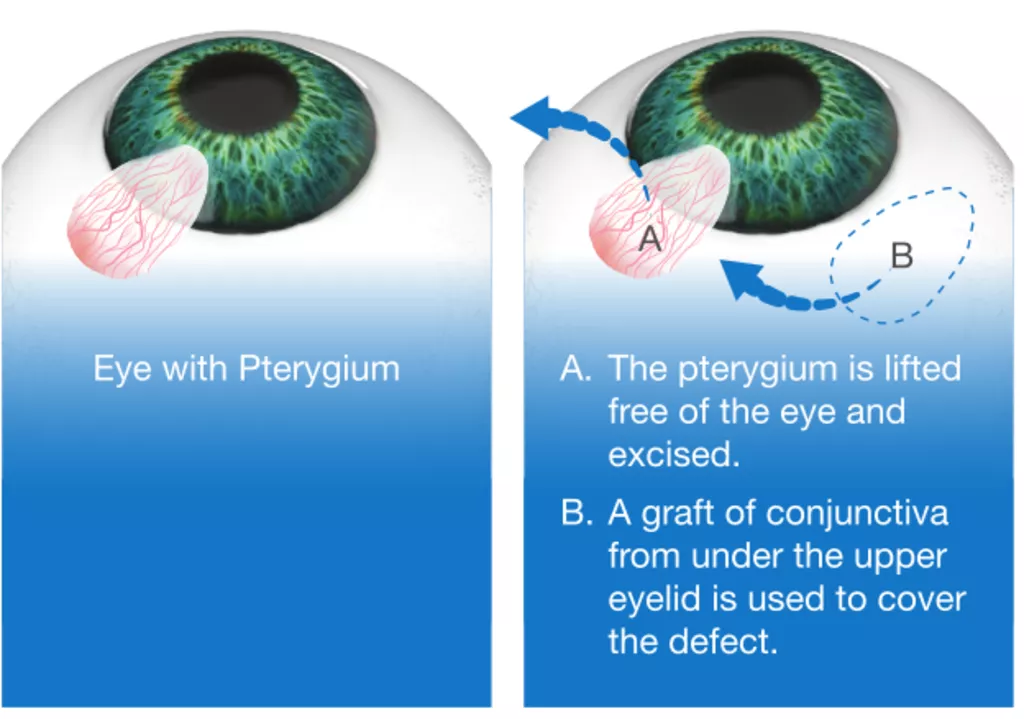What is a pterygium?
A pterygium (ter-IDG-ee-um) is a thickened growth of the conjunctiva, on the surface of the eye. It starts on the white of the eye, usually on the inner corner, and extends onto the cornea, the clear front window of the eye.

Why do pterygia develop?
Pterygia are caused primarily by ultraviolet light damage, although there may also be associations with dust and wind exposure. They usually develop in people with a history of significant sun exposure and tend to occur on the sun-exposed parts of the eye.
What are the main symptoms of pterygia?
As well as being noticeable growths, pterygia often cause redness and irritation of the eyes. Sun, wind and dry environments, like air-conditioning, may exacerbate this. Pterygia may affect vision by distorting the shape of the eye, causing astigmatism, or by growing large enough to cover the pupil. Pterygia may also cause contact lens intolerance.
What treatments can help with pterygia?
Artificial teardrops, which are available without prescription from pharmacies, lubricate the surface of the eye to improve comfort and redness. They can be used safely on a regular basis. If a pterygium becomes particularly inflamed non-steroidal or steroid anti-inflammatory drops may be prescribed for a short period, under supervision of an eye specialist. Decongestant drops such as Clear Eyes are not recommended as they can cause rebound redness, making the eyes worse. Protecting the eyes from ongoing ultraviolet light exposure may reduce the chance of a pterygium enlarging, so sunglasses should be worn when outside. When symptoms persist despite medical treatment, surgical removal of the pterygium may be required.
What does pterygium surgery involve?
Surgery may be recommended if a pterygium is causing persistent discomfort, redness or cosmetic concerns, if it is growing progressively larger, or if it is interfering with vision or contact lens wear. Surgery can be performed on one eye or both eyes at the same time.
Pterygium surgery is generally done under local anaesthetic as a day-stay procedure. It takes about half an hour for one eye and is not particularly uncomfortable. The pterygium is excised from the surface of the eye, and then a small piece of healthy conjunctival tissue, from under the upper lid, is transplanted onto the exposed white of the eye. Although traditionally held in place with stitches, Eye Doctors use fibrin glue in the majority of cases, to make the surgery quicker and reduce the irritation on the eye afterwards. The transplant helps the eye to heal with an improved cosmetic appearance and reduces the risk of pterygium recurrence, to about one in fifty.

What happens after surgery?
Following surgery a patch is placed on the eye overnight and postop drops are prescribed, usually about four times daily for 4-8 weeks after surgery. Painkillers are also recommended in the first one-two days, because they eye may be quite uncomfortable. The eye may look red for up to a month after surgery and there may be mild swelling or discomfort during this time, as the eye heals.

